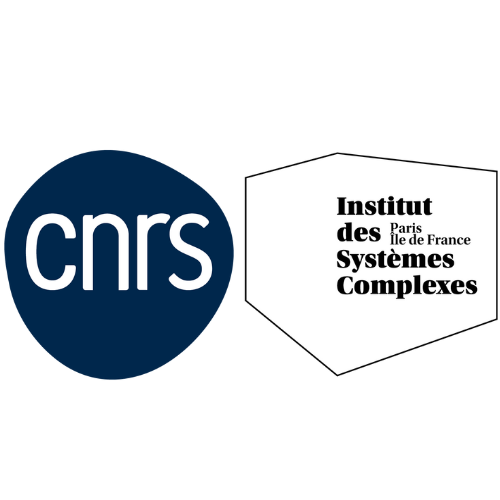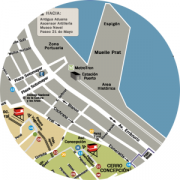Selected Publications
396913
X834HK63
apa
3
date
desc
4859
https://iscpif.fr/wp-content/plugins/zotpress/
%7B%22status%22%3A%22success%22%2C%22updateneeded%22%3Afalse%2C%22instance%22%3A%22zotpress-c71ad2f8e5815cea2f3ad317885d0f3e%22%2C%22meta%22%3A%7B%22request_last%22%3A0%2C%22request_next%22%3A0%2C%22used_cache%22%3Atrue%7D%2C%22data%22%3A%5B%7B%22key%22%3A%22WQBT62X4%22%2C%22library%22%3A%7B%22id%22%3A396913%7D%2C%22meta%22%3A%7B%22creatorSummary%22%3A%22Ducruet%20and%20Itoh%22%2C%22parsedDate%22%3A%222015-03-27%22%2C%22numChildren%22%3A0%7D%2C%22bib%22%3A%22%3Cdiv%20class%3D%5C%22csl-bib-body%5C%22%20style%3D%5C%22line-height%3A%202%3B%20padding-left%3A%201em%3B%20text-indent%3A-1em%3B%5C%22%3E%5Cn%20%20%3Cdiv%20class%3D%5C%22csl-entry%5C%22%3EDucruet%2C%20C.%2C%20%26amp%3B%20Itoh%2C%20H.%20%282015%29.%20Regions%20and%20material%20flows%3A%20investigating%20the%20regional%20branching%20and%20industry%20relatedness%20of%20port%20traffics%20in%20a%20global%20perspective.%20%3Ci%3EJournal%20of%20Economic%20Geography%3C%5C%2Fi%3E.%20%3Ca%20href%3D%27https%3A%5C%2F%5C%2Fdoi.org%5C%2F10.1093%5C%2Fjeg%5C%2Flbv010%27%3Ehttps%3A%5C%2F%5C%2Fdoi.org%5C%2F10.1093%5C%2Fjeg%5C%2Flbv010%3C%5C%2Fa%3E%3C%5C%2Fdiv%3E%5Cn%3C%5C%2Fdiv%3E%22%2C%22data%22%3A%7B%22itemType%22%3A%22journalArticle%22%2C%22title%22%3A%22Regions%20and%20material%20flows%3A%20investigating%20the%20regional%20branching%20and%20industry%20relatedness%20of%20port%20traffics%20in%20a%20global%20perspective%22%2C%22creators%22%3A%5B%7B%22creatorType%22%3A%22author%22%2C%22firstName%22%3A%22C.%22%2C%22lastName%22%3A%22Ducruet%22%7D%2C%7B%22creatorType%22%3A%22author%22%2C%22firstName%22%3A%22H.%22%2C%22lastName%22%3A%22Itoh%22%7D%5D%2C%22abstractNote%22%3A%22%22%2C%22date%22%3A%222015-03-27%22%2C%22language%22%3A%22en%22%2C%22DOI%22%3A%2210.1093%5C%2Fjeg%5C%2Flbv010%22%2C%22ISSN%22%3A%221468-2702%2C%201468-2710%22%2C%22url%22%3A%22http%3A%5C%2F%5C%2Fjoeg.oxfordjournals.org%5C%2Fcgi%5C%2Fdoi%5C%2F10.1093%5C%2Fjeg%5C%2Flbv010%22%2C%22collections%22%3A%5B%22DFIEKF27%22%2C%22X834HK63%22%5D%2C%22dateModified%22%3A%222015-09-19T01%3A16%3A31Z%22%7D%7D%2C%7B%22key%22%3A%22MJU4WIS3%22%2C%22library%22%3A%7B%22id%22%3A396913%7D%2C%22meta%22%3A%7B%22creatorSummary%22%3A%22Ng%20and%20Ducruet%22%2C%22parsedDate%22%3A%222014-12-01%22%2C%22numChildren%22%3A0%7D%2C%22bib%22%3A%22%3Cdiv%20class%3D%5C%22csl-bib-body%5C%22%20style%3D%5C%22line-height%3A%202%3B%20padding-left%3A%201em%3B%20text-indent%3A-1em%3B%5C%22%3E%5Cn%20%20%3Cdiv%20class%3D%5C%22csl-entry%5C%22%3ENg%2C%20A.%20K.%20Y.%2C%20%26amp%3B%20Ducruet%2C%20C.%20%282014%29.%20The%20changing%20tides%20of%20port%20geography%20%281950-2012%29.%20%3Ci%3EProgress%20in%20Human%20Geography%3C%5C%2Fi%3E%2C%20%3Ci%3E38%3C%5C%2Fi%3E%286%29%2C%20785%26%23x2013%3B823.%20%3Ca%20href%3D%27https%3A%5C%2F%5C%2Fdoi.org%5C%2F10.1177%5C%2F0309132513516178%27%3Ehttps%3A%5C%2F%5C%2Fdoi.org%5C%2F10.1177%5C%2F0309132513516178%3C%5C%2Fa%3E%3C%5C%2Fdiv%3E%5Cn%3C%5C%2Fdiv%3E%22%2C%22data%22%3A%7B%22itemType%22%3A%22journalArticle%22%2C%22title%22%3A%22The%20changing%20tides%20of%20port%20geography%20%281950-2012%29%22%2C%22creators%22%3A%5B%7B%22creatorType%22%3A%22author%22%2C%22firstName%22%3A%22A.%20K.%20Y.%22%2C%22lastName%22%3A%22Ng%22%7D%2C%7B%22creatorType%22%3A%22author%22%2C%22firstName%22%3A%22C.%22%2C%22lastName%22%3A%22Ducruet%22%7D%5D%2C%22abstractNote%22%3A%22%22%2C%22date%22%3A%222014-12-01%22%2C%22language%22%3A%22en%22%2C%22DOI%22%3A%2210.1177%5C%2F0309132513516178%22%2C%22ISSN%22%3A%220309-1325%2C%201477-0288%22%2C%22url%22%3A%22http%3A%5C%2F%5C%2Fphg.sagepub.com%5C%2Fcgi%5C%2Fdoi%5C%2F10.1177%5C%2F0309132513516178%22%2C%22collections%22%3A%5B%22DFIEKF27%22%2C%22X834HK63%22%5D%2C%22dateModified%22%3A%222015-09-19T01%3A14%3A51Z%22%7D%7D%5D%7D
Ducruet, C., & Itoh, H. (2015). Regions and material flows: investigating the regional branching and industry relatedness of port traffics in a global perspective.
Journal of Economic Geography.
https://doi.org/10.1093/jeg/lbv010
Ng, A. K. Y., & Ducruet, C. (2014). The changing tides of port geography (1950-2012).
Progress in Human Geography,
38(6), 785–823.
https://doi.org/10.1177/0309132513516178
Full list of publication on the World Seastems website








